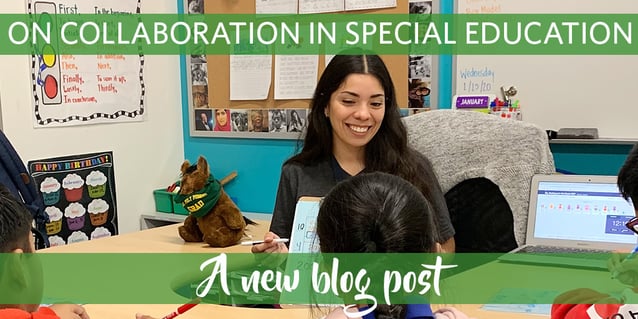
This month, we sat down with Maria Ana Rodriguez, a third year Resource Specialist Teacher at KIPP Iluminar Academy, and extraordinary human, to explore her belief in the importance of collaboration in the special education arena.
"As special education teachers, it is essential to collaborate and work closely with the child's stakeholders, such as their parents, general education teacher, speech pathologist, occupational therapist, counselor, in order to share resources and build advocacy for any environment the child is learning within. Having a holistic understanding of our students through those who work directly with them gives us a leverage to understand the needs of each student and to further provide the supports they need."
Why is collaboration critical to providing the most effective supports for each of our kippsters needs?
Collaboration is an essential component and practice in special education to best support students with disabilities through a holistic lens. Students with special needs many times work with multiple professionals throughout the week, including their general education teacher, special education teacher, and may also include related services with a speech pathologist, school counselor, occupational therapist, or adapted physical education teacher. Collaborating with these professionals from various disciplines that work with the child maintains open communication and builds effective relationships, and provides a better understanding of what can be further improved, aligned and developed in order to build resources for long term success.
"Having a holistic understanding of our students through those who work directly with them gives us a leverage to understand the needs of each student and to further provide the supports they need."
What does collaboration look like in meeting the needs of each child?
Collaboration with others to meet the needs of each child includes regularly meeting and communicating with the special education manager, service providers, general education teacher and the child’s family to discuss goals, progress, areas of strengths and needs, and sharing resources. Consistent communication between special education and general education teachers is vital for both parties as special education teachers can build stronger content mastery to teach a variety of learners, and general education teachers to continue the incorporation of accommodations within the students’ learning environment.
How does each team member contribute to holistically understanding the needs of each child, and build advocacy for the child's learning environment?
Each team member, including the child, plays an important role in the student’s success. Each professional that works with the student holds valuable input that not only supports the student in the given discipline, but can also provide insight and accommodations that the child can use to succeed in all areas. Year after year as students transition to a new grade level and/or school, the communication between all stakeholders who already have an understanding of the child’s strengths and needs opens more advocacy to continue to best support the child effectively throughout those transitions. As stakeholders have repeated opportunities to meet and communicate, there are growing opportunities to advocate for inclusive practices.
%20copy.png?width=572&height=226&name=KIPPSoCal_logo_white.lightblue%20(1)%20copy.png)
